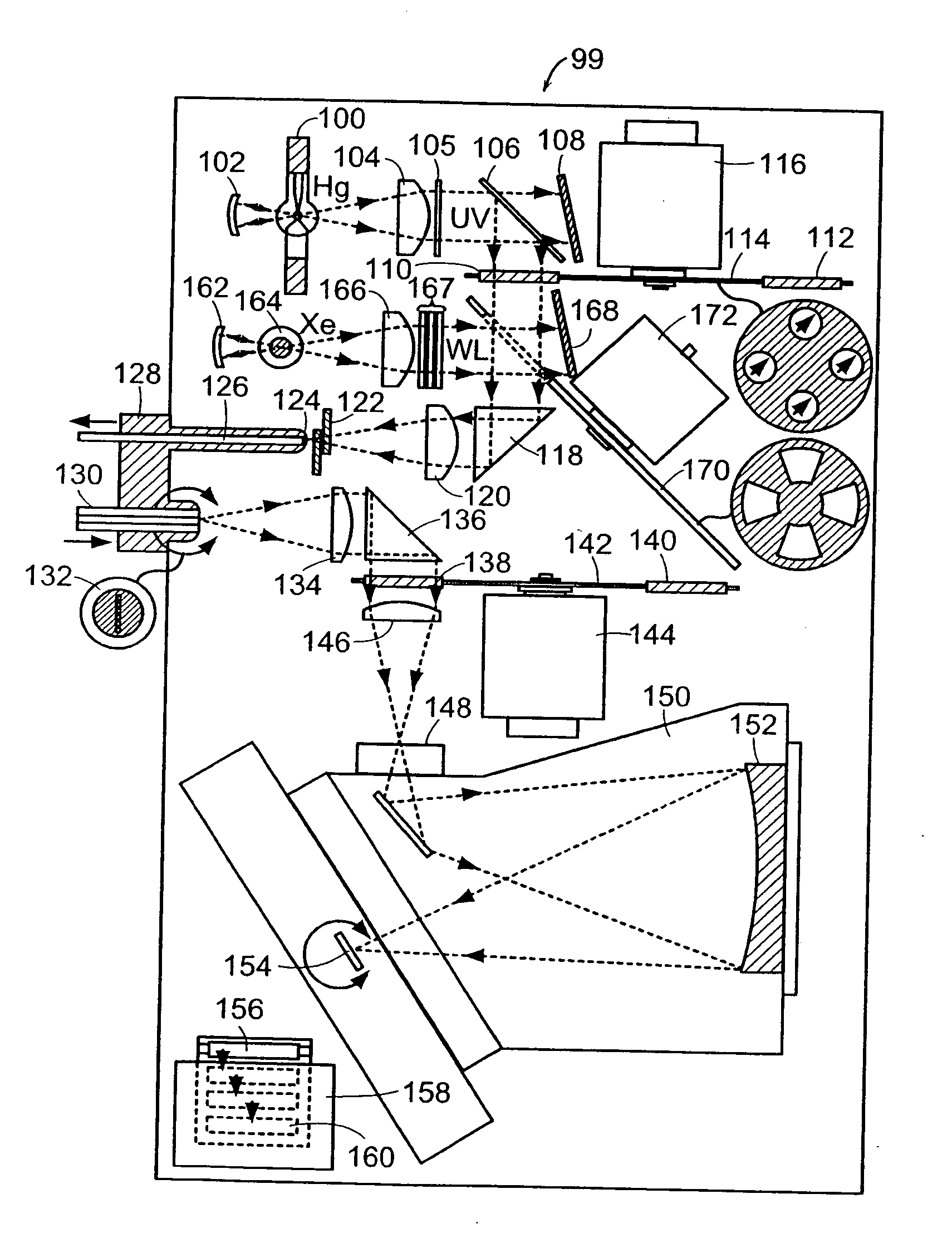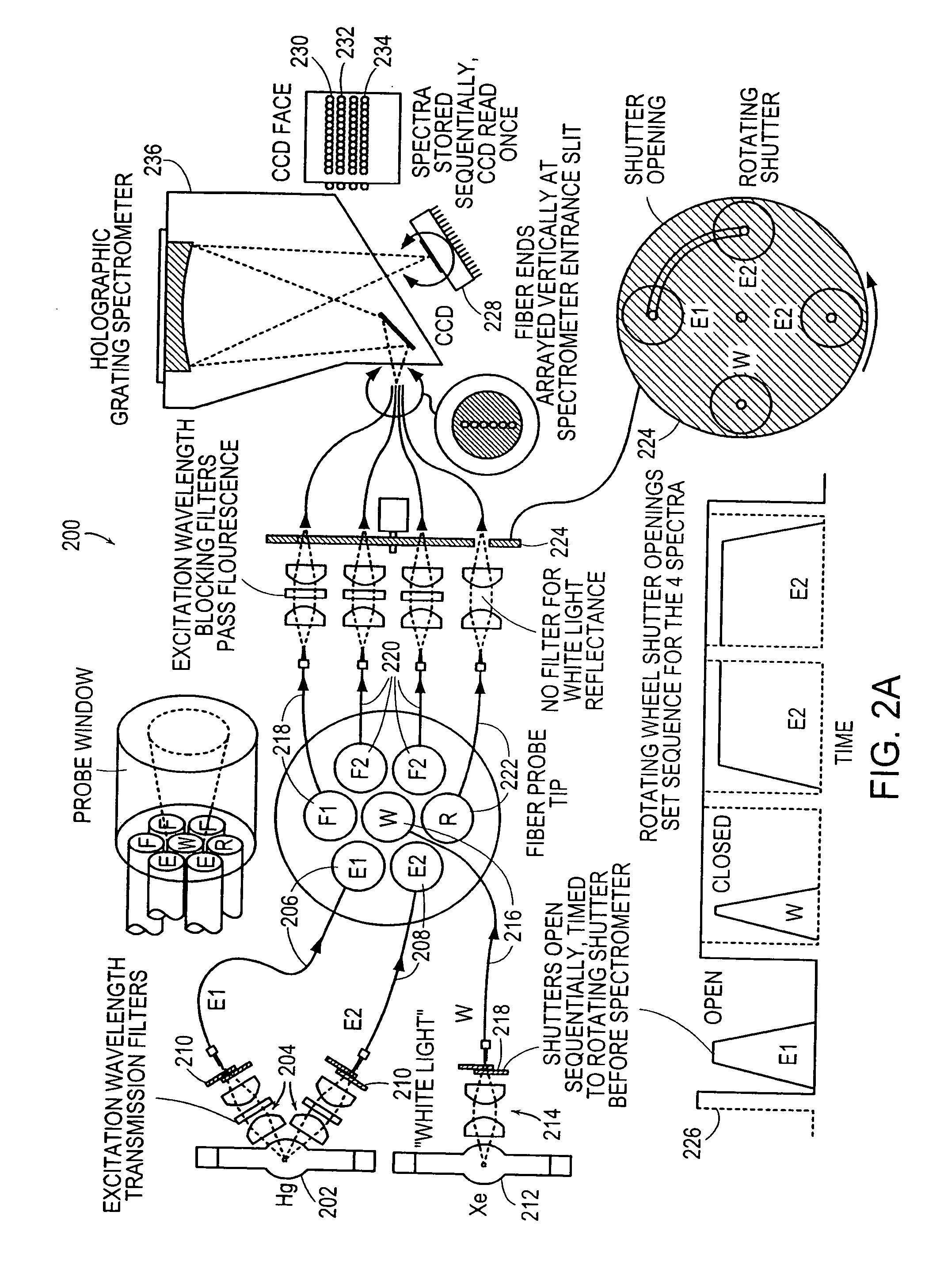Spectroscopic diagnostic method and system based on scattering of polarized light
a diagnostic method and light scattering technology, applied in the field of spectroscopic diagnostic methods and systems based on scattering of polarized light, can solve the problems of high sampling error, flat and not visually observable forms of atypia and dysplasia, and many early lesions that are often almost impossible to d
- Summary
- Abstract
- Description
- Claims
- Application Information
AI Technical Summary
Benefits of technology
Problems solved by technology
Method used
Image
Examples
embodiment 237
[0069]FIG. 2B illustrates schematically an embodiment 237 in which two excitation wavelengths, E1 and E2, that are sufficiently separated in wavelength that dichroic mirrors 238 can be used to separate the two wavelengths and then recombine them, after additional filtering into one illumination optical fiber 240. The two separate optical paths can also include shutters 242 to provide independent timing of illumination with E1 and E2.
[0070]Another alternative embodiment is shown in FIG. 3A. In this embodiment 300, all of the illumination colors are multiplexed into a single illumination fiber 302 so that all of the remaining fibers 304 can be used for the collection of each resulting fluorescence or reflectance spectrum. This approach has the advantage of multiplying the collected power by a factor of six at the cost of having to shift appropriate filters into the optical paths at the appropriate times, which slows down the overall collection time for the system. Rotating wheels 306,...
embodiment 329
[0072]The schematic diagram shown in FIG. 3B illustrates an embodiment 329 in which a single mercury lamp 330 can be used as a source for corrected broadband illumination (“white light” as described above), as well as several fluorescence excitation wavelengths, E1, E2 and E3. The different wavelengths are selected by movement of the appropriate filters, already discussed above, into the optical path using a filter wheel 332.
[0073]FIG. 4 illustrates an embodiment in which polarized light is emitted from the illumination optical fiber and the light collected by at least two collection optical fibers, preferably by four collection fibers. The details of the relationship of the illumination and collection optical fibers to the polarizer are illustrated schematically in FIGS. 5A-5B for both a single polarizer optical probe (FIG. 5A) and a crossed polarizer optical Probe (FIG. 5B).
[0074]Optical fiber probes for LSS typically transmit white light to the tissue through at least one illumin...
PUM
 Login to View More
Login to View More Abstract
Description
Claims
Application Information
 Login to View More
Login to View More - R&D
- Intellectual Property
- Life Sciences
- Materials
- Tech Scout
- Unparalleled Data Quality
- Higher Quality Content
- 60% Fewer Hallucinations
Browse by: Latest US Patents, China's latest patents, Technical Efficacy Thesaurus, Application Domain, Technology Topic, Popular Technical Reports.
© 2025 PatSnap. All rights reserved.Legal|Privacy policy|Modern Slavery Act Transparency Statement|Sitemap|About US| Contact US: help@patsnap.com



